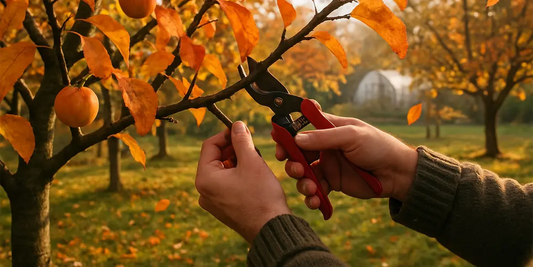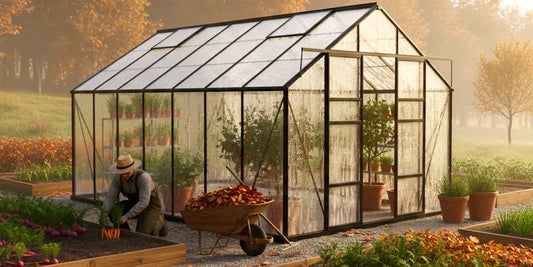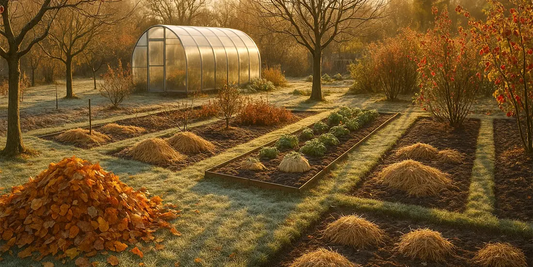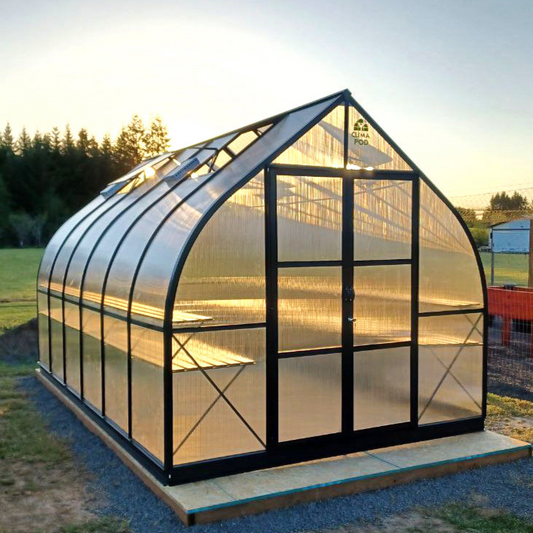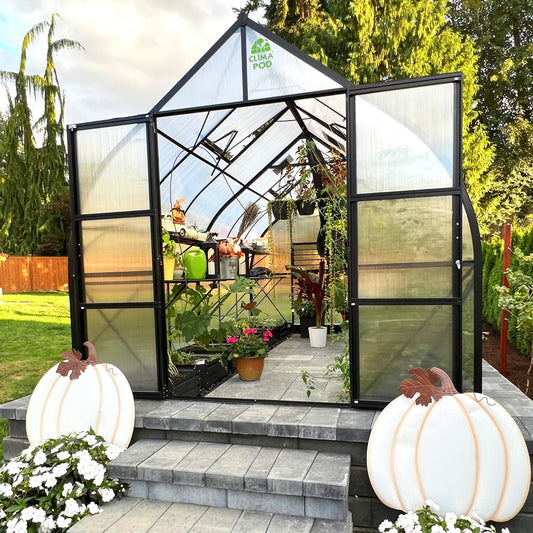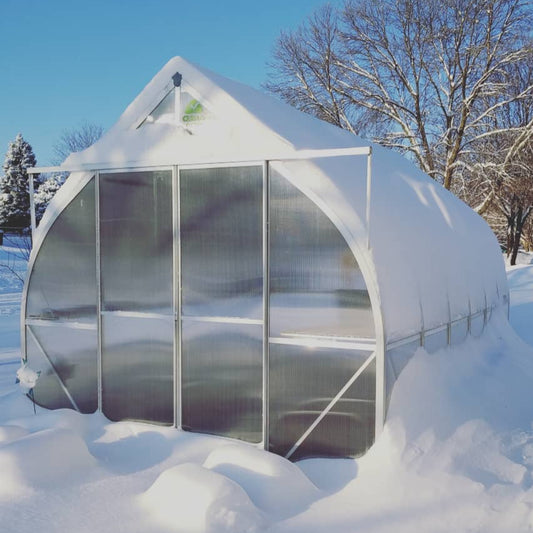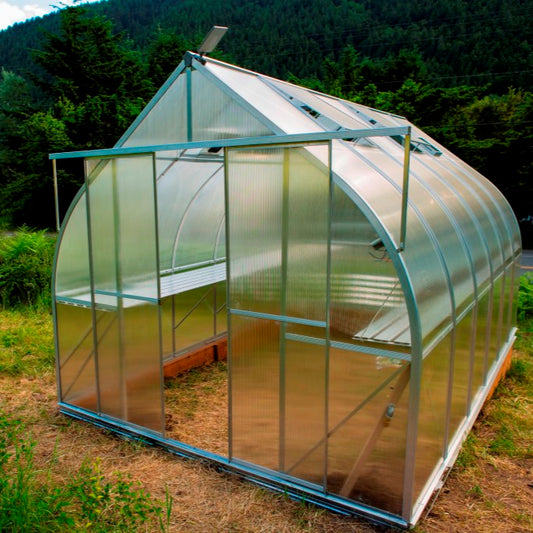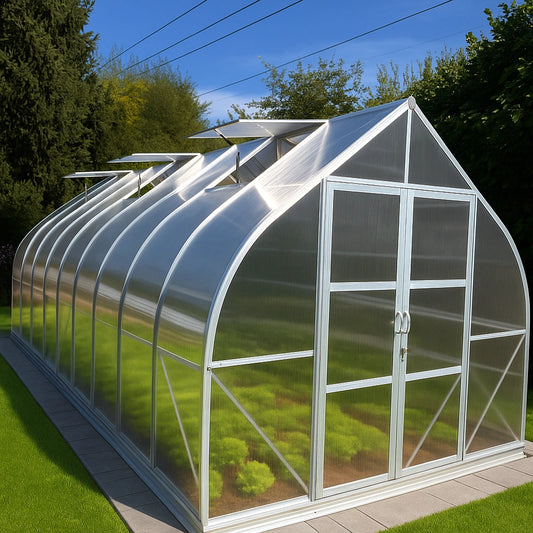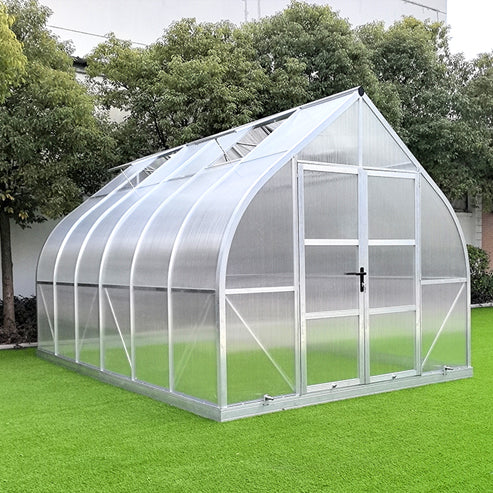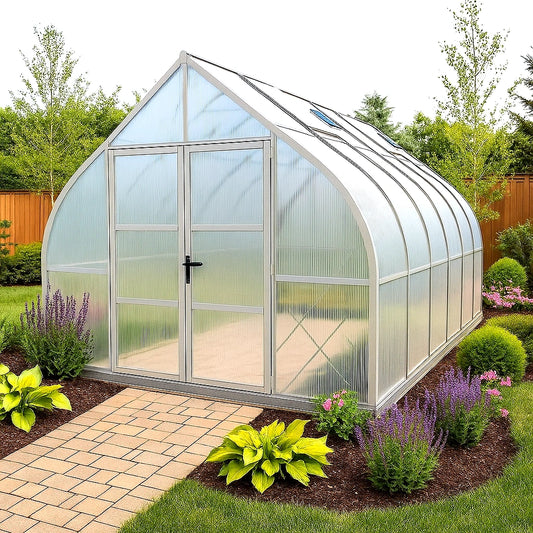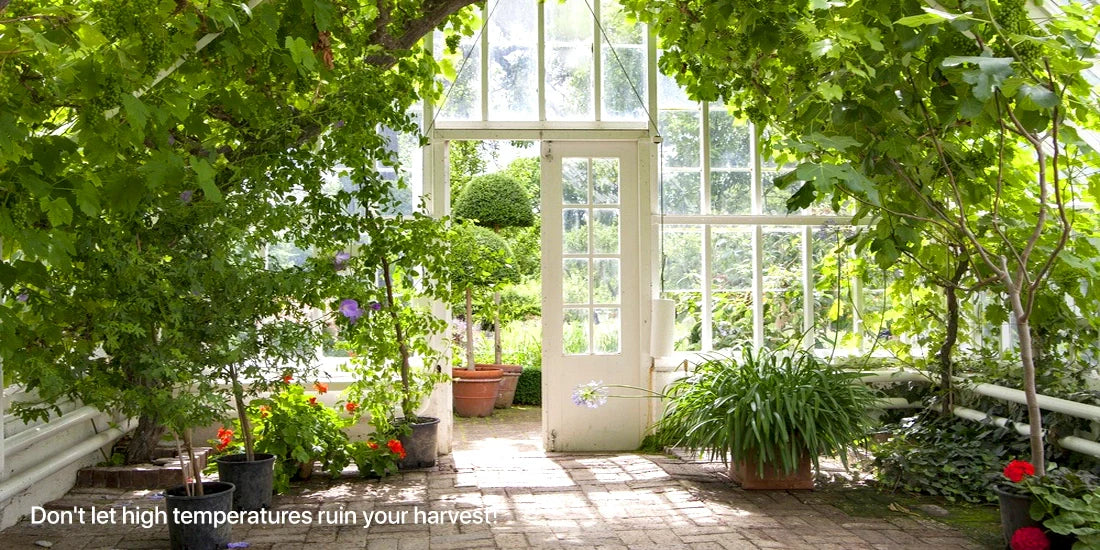
How to Protect Greenhouse Plants from Overheating in Summer
How to Protect Greenhouse Plants from Overheating in Summer
While many gardeners are rightfully cautious of spring frosts, high summer temperatures can be just as dangerous. Inside a greenhouse, heat accumulates rapidly, and if not properly controlled, it can cause irreversible damage to your plants from slowed growth to failed pollination.
Here’s a comprehensive guide to help you manage heat, improve airflow, and keep your greenhouse productive all season long.
Why Overheating Is Dangerous for Greenhouse Crops
When the air inside a greenhouse gets too hot, photosynthesis slows down. Pollen becomes sterile, meaning fruits and vegetables fail to develop. High temperatures can also:
- Cause leaf wilting or scorching;
- Disrupt nutrient absorption;
- Promote fungal diseases due to humidity imbalance;
- Create conditions for pest outbreaks.
Most plants thrive within a temperature range of 70–85°F during the day and 60–68°F at night. Exceeding these limits for extended periods leads to plant stress reducing both yield and quality.
Ideal Temperature Ranges for Common Greenhouse Crops
| Crop | Day Temp (°F) | Night Temp (°F) | Notes |
|---|---|---|---|
| Tomatoes | 70–80 | 60–65 | Needs ventilation to prevent blight |
| Cucumbers | 75–85 | 65–70 | Loves heat, but not stagnation |
| Peppers/Eggplant | 70–85 | 60–68 | Prone to blossom drop in heat |
| Leafy Greens | 60–70 | 50–60 | Bolts quickly in heat |
Best Practices to Prevent Greenhouse Overheating
Shading net under the greenhouse roof
1. Provide Effective Shade
Shading is your first defense against heat buildup. Options include:
- Shade cloths: Affordable and available in various densities (30%–70% light reduction). Best choice for consistent coverage and professional appearance.
- Heat-reflective mesh: Contains metallic threads to reflect sunlight and lower interior temps.
- Whitewash or shading paint: Temporary solution applied to the outside of polycarbonate or glass, washed away by rain or removed manually.
- Living barriers: Planting small hedges or vines near (but not too close to) the greenhouse can reduce radiant heat while maintaining airflow.
Inside the greenhouse, tall vining plants like gourds or passionflower can also create partial shade, just ensure they don’t block air vents.
2. Maximize Ventilation
Airflow is crucial for temperature control and plant health. Here's how to do it effectively:
- Passive ventilation: Roof vents, side vents, and roll-up sides allow hot air to escape and cooler air to enter naturally. Install at opposite ends of the greenhouse to create cross-breeze.
- Automated window openers: These hydraulic or wax-cylinder devices open vents when temperatures exceed a set point (usually 77–86°F) and close them as it cools.
- Exhaust fans: For greenhouses larger than 20–25 feet in length, powered fans improve air exchange when natural ventilation isn't enough.
- Solar-powered fans: Ideal for off-grid or remote gardens — they activate automatically based on temperature, with no wiring required.
3. Monitor with Precision
Install both air and soil thermometers at different heights and zones within the greenhouse. This helps detect uneven heating or ventilation blind spots. Wireless sensors with mobile app integration offer real-time alerts.

Pro Tip: Combine Cooling Strategies for Best Results
The most effective greenhouses use a layered system of protection:
- Shading reduces light intensity and heat
- Ventilation maintains airflow
- Automation eliminates the need for constant monitoring
- Moisture control (via misting systems or mulch) balances humidity and cools the root zone

These systems work best together, not in isolation.
Don’t Let the Heat Burn Your Harvest
Your plants work hard all season long and a few scorching days shouldn’t undo that effort. With the right balance of shade, airflow, and smart tools, your greenhouse can remain a haven for growth even during the hottest weeks of the year.
Whether you're growing for your family or for market, preventing heat stress ensures higher yields, healthier plants, and a more predictable growing schedule.

If you need help choosing fans, automatic vent systems, or shade solutions for your greenhouse, we offer kits and accessories designed for every size and climate across the U.S. Let your greenhouse work smarter — not harder — all summer long.


